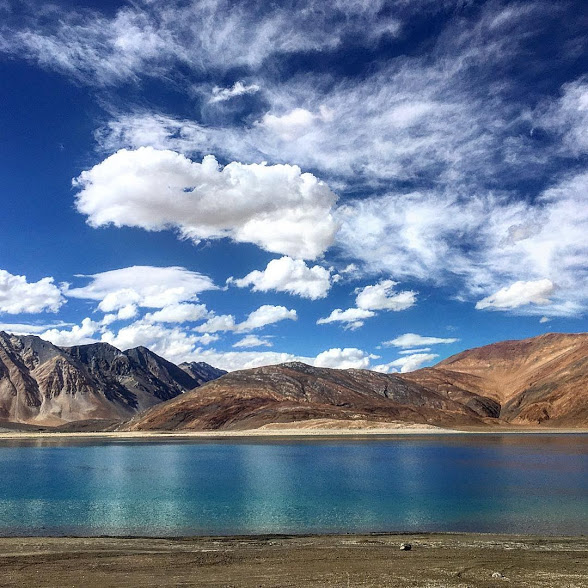For wildlife lovers Borneo offers unprecedented opportunities to see some of the world’s most enigmatic and fascinating creatures up close and personal. The scale of Borneo is astounding; it’s the third largest island in the world and houses rainforest that is over 130 million years old making it the oldest on the planet.
As with many other islands like Madagascar and the Galapagos, this isolation from the mainland has helped life here to evolve in ways not seen anywhere else in world. Borneo consequently benefits from an astonishing level of bio-diversity which includes 44 species found nowhere else on earth. Is it any wonder, then, that Borneo has become a mecca for wildlife fanatics and photographers alike who flock here from the four corners of the globe?
However despite the popularity of Borneo among naturalists it is still a far cry from civilization. Many of the resorts and hotels only offer basic accommodation while even getting here in the first place can present problems. For example very few direct flights exist and so most visitors end up having to catch a transfer from Kuala Lumpur.
Be aware that the prices of flights can differ wildly depending on season and national holidays so if you’re considering Borneo as a possible holiday destination it can be well worth examining flight comparison sites to check where money can be saved.
Getting here is just part of the problem; the island is so large that on arrival it can be difficult to know where to direct your attention. For the wildlife lover though, there are some clear highlights that no visit to Borneo would be complete without and that’s where we’ll be focusing our attention in the remainder of this article.
1. Danum Valley
The Danum Valley conservation area represents the largest area of undisturbed rainforest anywhere in Malaysia. The size and age of the jungle means it offers probably the widest diversity of wildlife found anywhere on the island and is home to some of Borneo’s most eclectic species including Sumatran rhinos, sun bears and clouded leopards.
What impresses visitors to Danum is not just the volume of animals on display but also the ease with which they can be seen. The reservation offers over 50km of marked walks together with raised platforms through the forest canopy and carefully-orchestrated night safaris.
However it’s not just the exceptional wildlife spectacles that draw tourists; the area is also home to some of the most stunning waterfalls in Asia, most notably Sungrai Purut with its seven tiered pools of water and 20 metre cascade.
2. Kampung Bilit
Whilst African safaris have their “big 5” animals that every visitor hopes to see so Borneo also has a number of “headline species”. Of these the Bornean pygmy elephant must come close to the top of the list. Whilst the word “pygmy” may give an exaggerated impression of how small this species really is, they are noticeably more compact than standard Asian elephants. Scientists believe that this smaller stature has evolved to help the elephants move around in the dense undergrowth of the rainforest.
Whilst pygmy elephants are present in many of the heavily forested areas of Borneo, Kampung Bilit is one of the best places of all to see them. Here they can be seen casually going about their everyday activities as they visit the many watering holes and river banks to drink, bathe and frolic.
3. Kinabatangan River
Kinabatangan is Borneo’s second largest river and its banks nestle against Kampung Bilit. Here the main attractions are the water safaris where one can take a gentle boat-ride down the winding river. In doing so, you’ll gain an intimate glimpse into the lives of the local fauna from the comfort of your seat.
Just as at Kampung Bilit, your chances of seeing pygmy elephants are excellent. Furthermore a range of other animals are frequently seen along the river’s edge including civets, orang-utans and pygmy hippos, not to mention the 420 species of bird present in Borneo.
4. Selingan Island
Known affectionately and unofficially as “turtle island” you won’t win any prizes for figuring out the main draw of Selingan Island. Daytime offers the chance to stroll gently along the expansive beaches or indulge in some snorkelling thanks to the clear, warm water and pristine coral atoll which seems to throb with sea-life at every turn.
However it‘s at night that Selingan really comes to life. As the sun sets over the ocean, adult turtles drag their heavy bodies up the beach to lay their eggs. Alongside the vigorous digging, young turtles are hatching from nests laid months before and making a break for the safety of the ocean.
Borneo is such a key area for nesting turtles that all this activity is carefully controlled by local marshals and experienced guides to ensure the perfect compromise between the turtle’s safety and your own enjoyment.
5. Gunung Mulu
For a truly jaw-dropping experience you can’t go wrong with the remote reserve of Gunung Mulu. Swathed in rainforest and boasting more wildlife than you can shake a stick at the real draw at Mulu are limestone caves on a scale that boggles the mind. It’s said that the largest of these caves, known as the Sarawak Chamber, could comfortably house 40 jumbo jets.
Many of these caves link to one another underground so a subterranean walk beneath the surface of the rainforest can provide visitors with a truly memorable experience. Wildlife fanatics will be interested to hear that one particular site – Deer Cave – is famous for its vast colony of wrinkle-lipped bats, which can be seen streaming out of the cave at dusk in numbers too numerous to count.
6. Sepilok Orangutan Sanctuary
To many people Borneo is synonymous with orang-utans and whilst orang-utans may be seen in many areas of Borneo your odds are best at the orang-utan sanctuary in Sepilok. Here, orphaned or otherwise displaced orang-utans are gently rehabilitated into the jungle and local guides provide food at raised platforms twice a day. These feeding stations almost guarantee you the best possible view of these impressive apes; surely a memory you’ll cherish for the rest of your life.
This article was written by CheapFlights.com, to find cheap airfares please visit http://www.cheapflights.co.uk/



 Travel to Borneo (Sarawak and Sabah) – Episode 222
Travel to Borneo (Sarawak and Sabah) – Episode 222 Elephant Sanctuary – Chiang Mai, Thailand
Elephant Sanctuary – Chiang Mai, Thailand A Natural Wonder – Sipadan Island, Malaysia
A Natural Wonder – Sipadan Island, Malaysia 10 Unexplored Places in India
10 Unexplored Places in India


Mary
Says:October 6th, 2012 at 6:09 am
The Kinabatangan region can be visited all year round, though it is often flooded during the wettest part of the year in December and January. Everyone should visit the river and see those fantastic activities in the river. Take a look at the remarkable wildlife and fascinating habitats such as limestone caves.
Gabriel
Says:October 9th, 2012 at 7:38 am
Gunung Mulu sounds like somewhere I’d like to visit. I’ve always wanted to see first hand the shots in the movies where thousands of bats come flying out of a cave.